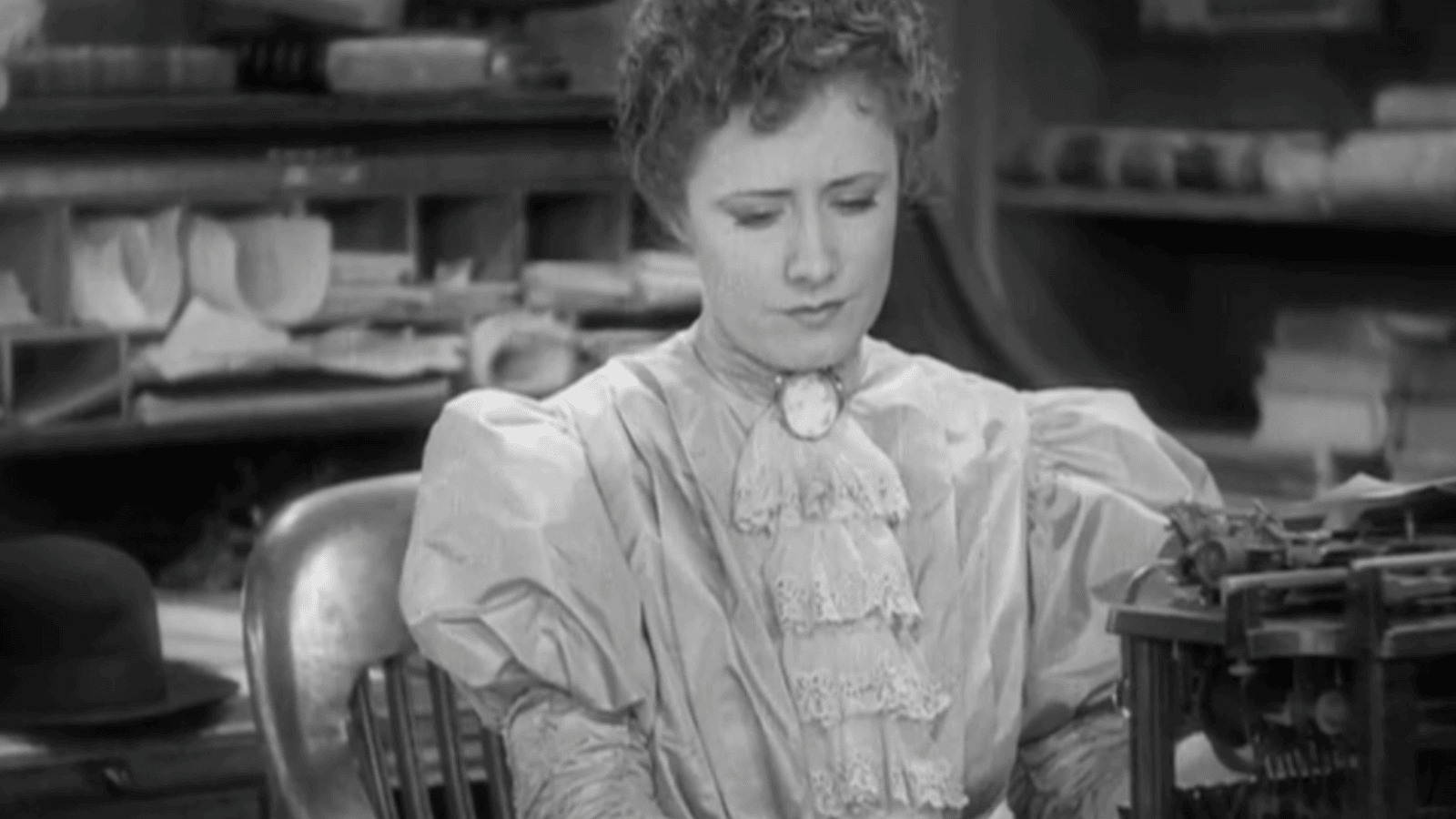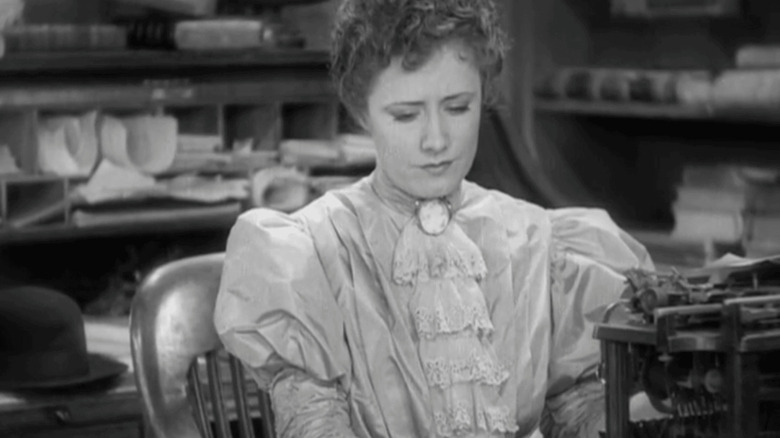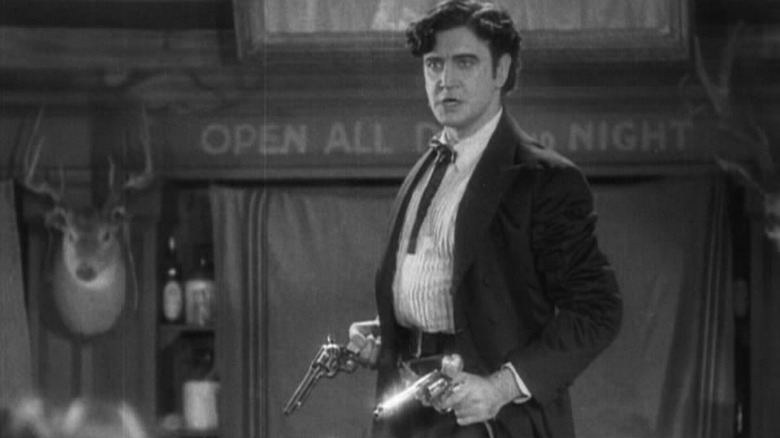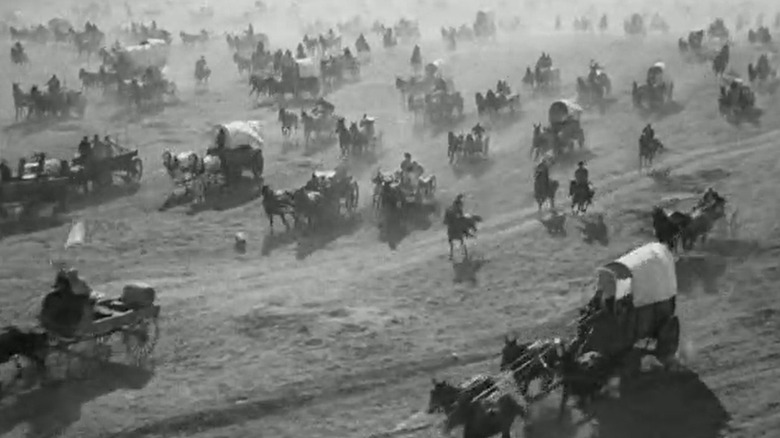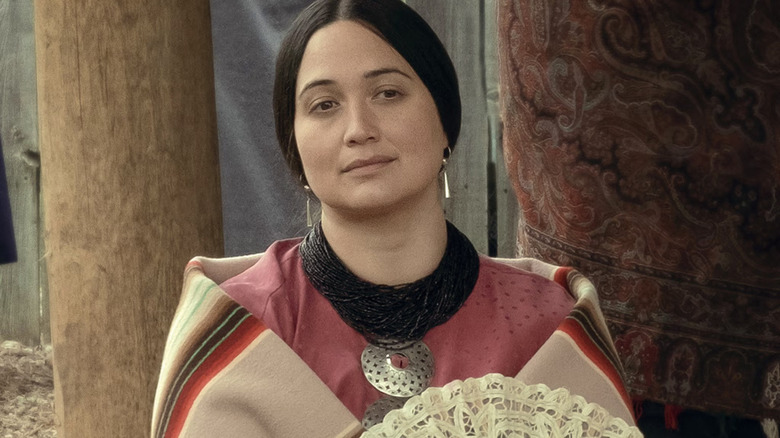We may receive commissions on purchases made from links.
In the history of the Academy Awards, only 17 Westerns have ever been nominated for Best Picture. A short list of nominees: “In Old Arizona” (1928), “Cimarron” (1931), “Viva Villa!” (1934), “Stagecoach” (1939), “The Ox-Bow Incident” (1943), “The Treasure of the Sierra Madre” (1948), “High Noon” (1952), “Shane” (1953), ” How the West Was Won” (1963), “Butch Cassidy and the Sundance Kid” (1969), “Dances with Wolves” (1990), “Unforgiven” (1992), “No Country for Old Men” (2007), “True Grit” (2010), “Django Unchained” (2012), “Hell or High Water” (2016) and “The Power of the Dog” (2021).
Others may border on the genre, such as “Brokeback Mountain” or “The Revenant”, but the above 17 are indisputable.
The first of these 17 films to win Best Picture was Wesley Ruggle’s American historical epic “Cimarron,” one of the highest-reviewed films of its time. Variety’s 1931 review of the film hailed it as one of the great spectacles of modern times, a pinnacle of pop filmmaking. The reviewer wrote that “Ruggles clearly gets all the credit for this stunning and weighty production. His direction lacks nothing in the elaborate scenes, as well as in the usual filmmaking.” The New York Times was equally effusiveand said it was one of the “highlights of the year” and that it was a “bonafide epic”.
But those reviews are over 90 years old. In 2024, “Cimarron” has been re-evaluated several times, and nowadays ranks as one of the worst films to ever win Best Picture. Its story now reads as painfully male-centric, racist, and the film largely celebrates the horrors of American colonialism. In the early 1930s, stories of bold American industrialism were seen as a success story. Compare “Cimarron” to Martin Scorsese’s “Killers of the Flower Moon,” and you’ll begin to see that a lot had to be killed and destroyed for white men to become the fabled “titans of industry” they were celebrated as.
“Cimarron” is now considered one of the worst films to win Best Picture
The protagonist of “Cimarron” is Yancey Cravat (Richard Dix), a man who has enthusiastically uprooted his family to participate in the great Oklahoma Land Rush of 1889. Two million acres of what were once Seminole and Creek lands were suddenly claimed by the U.S. s government would be officially open for settlement, and 50,000 people literally lined up to take and claim whatever land they wanted. The opening sequence of all 50,000 people taking off to steal land is a big, exciting, cinematic sequence. Yancey’s wife, Sabra (Irene Dunn) abhors the idea and hates everything Yancey does. Yancey, by contrast, is portrayed as bold and forward-looking, presented as one of the great men necessary to ensure that America was built.
The family settles in Osage, Oklahoma, and Yancey establishes himself as both publisher and freelance lawman, eager to whip the town into shape. The city continues to prosper. When Yancey kills a local outlaw (William Collier, Jr.), he flees the Osage in disgust, leaving Sabra to run his paper on his own. She manages to make the paper huge in his absence, but there is a sense that she is just holding the paper for him until he returns. He does so five years later, just in time to serve as a heroic, freelance lawyer for a wrongfully convicted woman (Estelle Taylor). Then… Yancey disappears again.
Sabra continues to run Yancy’s business, and she is ultimately the one who does all the hard work to make Osage grow to the size it did. However, she is terribly racist towards the natives and she and the other settlers flee their land.
“Cimarron” is roughly dated
But Sabra eventually learns to be more tolerant and eventually becomes a hero to the Osage, representing their interests by becoming a member of Congress.
Yancey returns at the end of the film when he and Sabra are older. By this time there has already been an oil boom in Osage, and the town is as big as it has ever been. Yancey, unrecognizable, staggers back into town, just in time to save some workers from an oil explosion. However, he is injured in the rescue and dies in Sabra’s arms.
While it’s clear that Sabra is the real hero of “Cimarron,” Yancey is repeatedly treated as the bold decision maker and the actual founder of it all. There is certainly a sexist approach to the film, no matter how strong and victorious Sabra appears. Ruggles’ film also blithely portrays the “Land Rush” as a net positive effect for America, rarely pausing to consider the horrific theft experienced by Native Americans at the time. For the natives, this is a horror story.
“Cimarron” currently holds just a 52% approval rating on Rotten Tomatoes, drawn from 33 reviews (including one of my own). Pauline Kael hated it and wrote about the film in her book “5001 Nights at the Movies.” She called it “a dizzying trek through the hardships and glories of American heritage.” I find the film to be polite, stiff and undynamic, with only its opening drunk sequence having any energy or visual acumen. It’s not the worst movie to win Best Picture — that honor is a toss-up between “Green Book”, “Crash,” “Gladiator,” and “The Greatest Show on Earth,” in my opinion — but it’s really down there.
“Cimarron” has been refuted by Martin Scorsese
“Cimarron” comes from a movie genre that isn’t really in vogue anymore; The Building of America genre. The 1930s in particular were filled with more sweeping dramas about how America was built and presented without a lick of irony or self-awareness. Great sacrifices were made and great ideas carried out by faithful, intelligent white men. These were incomplete visions of history and were so jingoistic that Ronald Reagan is getting excited from the afterlife. This kind of epic remains the bedrock of American cinema and requires constant deconstruction by other filmmakers.
Indeed, in recent decades, similar dramas have been made by wiser directors who deliberately refute the jingoism of an earlier generation. Most recently, and most directly connected to the “Cimarron”, one can remember Martin Scorsese nominated for best film “Killers of the Flower Moon”. That movie was also set in the Osage but focused more on the Osage people, and their deliberate and systematic exploitation of chaotic, whiny white guys. William King Hale (Robert De Niro) moved to Osage country claiming to be a lawyer, when in fact he was there to marry off the Osage women to white men and then convince the men to poison them and steal their oil wealth. The film was nominated for 10 Oscars but won zero.
William King Hale was presented by Scorsese as a dark mirror for Yancey Cravat. They were both presented as bold community builders on the outside, but Yancey was a hero to his core, while Hale was rotten and evil. But both of us infected with confidence and boldness. It didn’t take clever loners to build America, Scorsese said. It took evil people with the confidence and the means to hurt others, steal land, claim they had the mandate to do it, and then feel no remorse.

